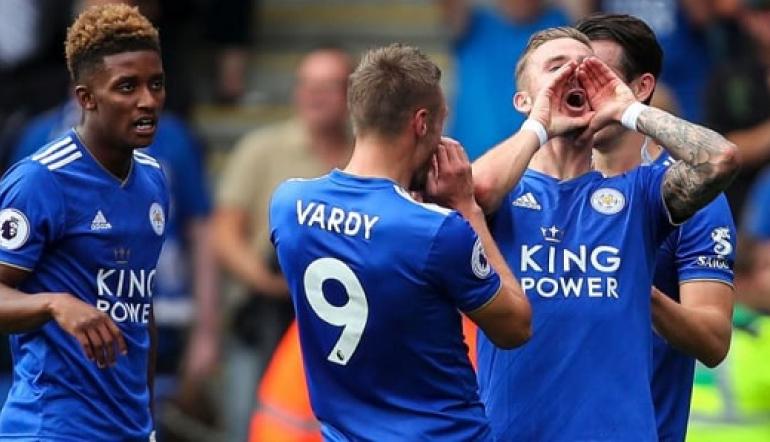Leicester City season review: Focusing on the reigns of Puel and Rodgers
Leicester City secured a 9th place finish in the Premier League in the 2018-19 season, as the Foxes fell inches short of securing a Europa League qualification spot.
It was a decent season for the club after all and though a top-ten finish isn’t likely to spark wild celebrations amongst the fans at the King Power Stadium, Leicester did reasonably well to match their exploits from the 2017-18 campaign.
It is true that the paymasters at the King Power Stadium would have expected the squad to challenge for a European spot after a summer of heavy spending last time around, however, they should be reasonably pleased with the progress that the club has made over the course of the previous campaign.

The Foxes splashed the cash to bring in the likes of James Maddison from Norwich City and Ricardo Pereira from Porto last summer, as Leicester City made the headlines with their statement signings.
Both the aforementioned players were amongst the standout performers this past season, with Pereira being named as the club’s Player of the Year, while Maddison bagged the award for the Young Player of the Year.
Leicester have every reason to be pleased with the kind of impact that their new signings have had over the past year or so, although they would probably have expected a lot more from Rachid Ghezzal, who came in as a like-to-like replacement for Riyad Mahrez.
Another big-money signing, Caglar Soyuncu failed to mount a challenge for a first-team role but Filip Benkovic’s impressive loan spell at Celtic is likely to make the owners and the scouts happy.
Now, moving away from the transfer scheme of things and taking the overall team performance into consideration, one cannot help but feel that Leicester could probably have done a lot better with the quality of players that they had in their ranks.

They kicked off their campaign with a 2-1 defeat to Manchester United, where they virtually dominated the proceedings and certainly didn’t deserve to end up without a point, although back-to-back victories over Wolves and Southampton helped them get their campaign back on track.
Despite that, however, Leicester never really managed to keep up that kind of form over a sustained period to mount a strong enough challenge for a European spot, with the likes of Watford, Bournemouth and Wolves showing a lot more consistency in the earlier stages of this past campaign.
Fast-forwarding the season to November, Leicester dropped points against the likes of Brighton and Burnley, which, in all honesty, were supposed to be pretty much straightforward fixtures for the Foxes.
Those are the instances that they would probably look back now and think that they could have done a lot better given that they were head and shoulders above both the aforementioned teams in terms of quality.

Similarly, the Foxes once again stumbled against the likes of Crystal Palace and Fulham early in December before a sudden upturn of form saw them register surprise victories over heavyweights Manchester City and Chelsea.
That, however, only proved to be a temporary relief for manager Claude Puel, as the Foxes once again suffered a disappointing defeat at the hands of Cardiff City. Again, they returned to winning ways against Everton on New Year’s day, which was supposed to be a much trickier fixture.
To sum it up, Leicester’s performance graph this past season was full of highs and lows and whilst they managed to get over the line with some really impressive performances against some of the big teams, the Foxes just didn’t do enough to make the most of the relatively easier fixtures.
And it was always going to be a matter of time before the hierarchy ran out of patience.
With all due respect to his managerial acumen and past achievements, Claude Puel’s reign at the King Power Stadium didn’t really endear him to the hearts of the fans, partly because his man-management wasn’t good enough and partly because his style and philosophy failed to extract the best out of the existing players at the club.

Since their promotion to the Premier League back in 2014, Leicester have relied heavily on Jamie Vardy to deliver the goods in front of goal.
However, Puel seemingly adopted an approach which shifted the focus of attention away from Vardy and that didn’t really go down well with the fans given that the striker is a firm fan favourite.
The Frenchman’s slow passing game and patient possession-based build-up play didn’t exactly suit Vardy’s strengths and the former England international struggled to find the net on a regular basis.
Also, the lack of an impactful back-up striker in the ranks cost Puel and it became more and more apparent as the season wore on that Vardy was never going to excel in a system that looked pedestrian and way too slow, to be honest.
It is Vardy’s ability to time his run perfectly behind defences that makes him such a potent threat up front but the manager hardly ever made an attempt to play to his strengths.
And that cost Leicester a lot of points against some of the sides that eventually finished in the bottom half of the table.

Moreover, Puel seemed reluctant all the time to tinker with his tactics, and his team selection often raised a lot of eyebrows, with the likes of Adrien Silva and Vicente Iborra finding themselves below Nampalys Mendy in the pecking order for some unknown reason.
A shock exit from the FA Cup at the hands of Newport County coupled with a six-game winless streak in the Premier League from early January to late February was enough for the Leicester hierarchy to pull the trigger on Puel, thus marking the end of the Frenchman’s rather lacklustre reign.
Mike Stowell and Adam Sadler assumed the caretaker duties before Brendan Rodgers left Celtic to take up the vacant managerial role at the King Power Stadium.
The arrival of Rodgers brought about a radical change as far as the style of play was concerned, as the Foxes responded brilliantly to the new manager’s tactical flexibility.
Although Leicester went down 2-1 to Watford in his first game in charge, the change in the mentality of the players and the way they approached the game was pretty apparent and it was not a big surprise to see that the performance levels reached a completely different level soon.
Leicester had failed to register victories over the likes of Burnley, Bournemouth and Fulham earlier in the campaign but with Rodgers at the helm of affairs, the Foxes completely destroyed all three teams towards the end of the season.

As opposed to Puel, Rodgers adopted a more dynamic approach and he seemed to have a concrete plan heading into each game, with the manager encouraging his players to play an attacking brand of football without compromising on defensive solidity.
With all due respect to Puel, a slow, boring and pedestrian brand of football was replaced by a more attack-minded philosophy which involved a fast transition from defence to attack.
Leicester, under Rodgers, moved the ball around a lot quicker in the middle of the park and didn’t tend to slow things down with too many touches on the ball as they so often did when Puel was in charge.
Such a dynamic system complemented by the creativity of Youri Tielemans and Maddison in the midfield brought the best out of the prolific Jamie Vardy.
Vardy, who had struggled to make an impact under Puel, resurrected his season with an impressive run of form towards the closing stages, as the Englishman netted 9 goals in the final 10 games of the campaign.

The 32-year-old bagged a brace and produced a man-of-the-match display in the 3-0 humiliation of Arsenal, reminding one and all that he is Leicester’s undisputed talisman in front of goal and an indispensable component of their attack.
All in all, it might only have been a decent campaign for Leicester but the promise that they showed under Rodgers in the last ten games or so, coupled with some really incredible individual performances, means that the Foxes can look forward to better things in the days to come.

